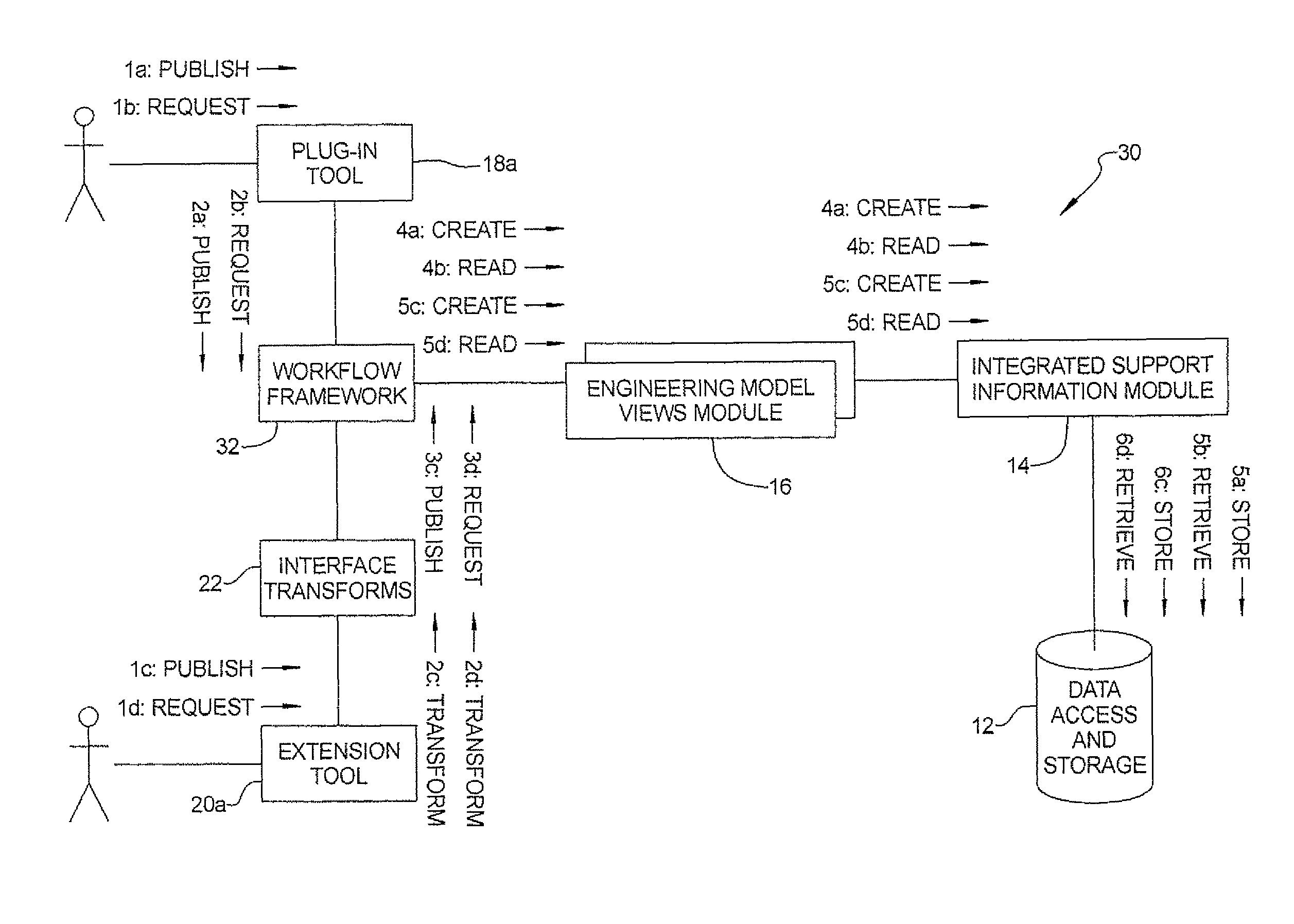Support model integration system and method
a support model and integration system technology, applied in the field of systems for engineering analysis and design of health management and monitoring systems, can solve the problems of insufficient to address availability-driven design, cost, and legacy approaches to system design, and achieve the effect of reducing the number of support model integrations
- Summary
- Abstract
- Description
- Claims
- Application Information
AI Technical Summary
Benefits of technology
Problems solved by technology
Method used
Image
Examples
Embodiment Construction
[0020]The following description is merely exemplary in nature and is not intended to limit the present disclosure, application, or uses.
[0021]Referring to FIG. 1, there is illustrated a reference architecture diagram representing an exemplary architecture for a system 10 in accordance with one embodiment of the present disclosure. At a high level, the system 10 can be viewed as having an architecture that enables a separation of the analytical views of various engineering disciplines from underlying health management data that is useful for each engineering discipline. The system 10 provides a “framework” by which each specific client tool that is accessing the system can publish information to a system database, or can obtain information from the database, in a manner where the information can be properly viewed, analyzed and used by a user working with the specific client tool. The architecture of the system 10 enables each one of a plurality of client tools to publish information...
PUM
 Login to View More
Login to View More Abstract
Description
Claims
Application Information
 Login to View More
Login to View More - R&D
- Intellectual Property
- Life Sciences
- Materials
- Tech Scout
- Unparalleled Data Quality
- Higher Quality Content
- 60% Fewer Hallucinations
Browse by: Latest US Patents, China's latest patents, Technical Efficacy Thesaurus, Application Domain, Technology Topic, Popular Technical Reports.
© 2025 PatSnap. All rights reserved.Legal|Privacy policy|Modern Slavery Act Transparency Statement|Sitemap|About US| Contact US: help@patsnap.com



